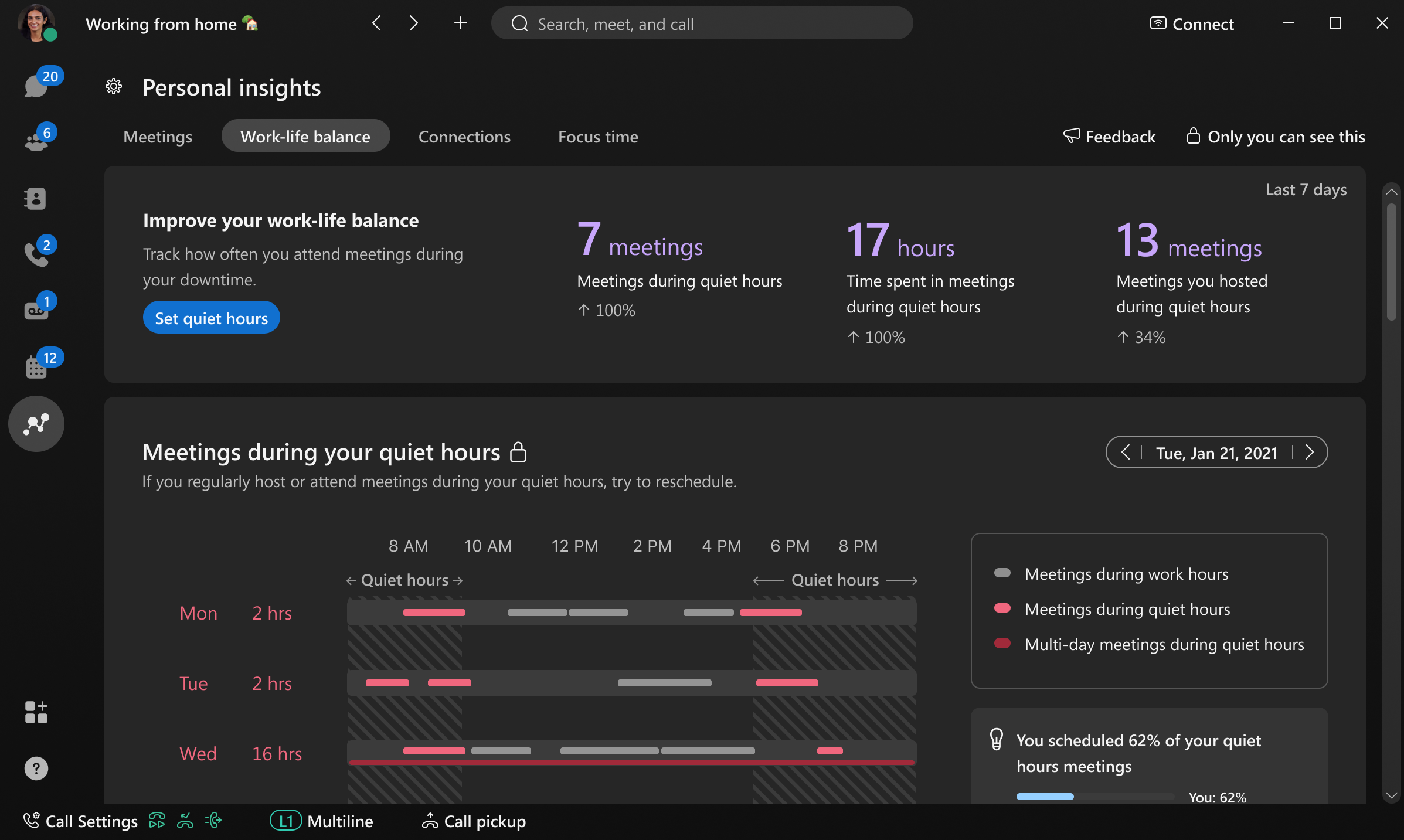How Does the Office of the Future Support Employees in a Hybrid Work Model?
What chief people officers can do to transform their HR strategies to support engagement, inclusivity, and wellness.
The word “office” stems from the Latin officium—“duty”—referring to a purpose, not necessarily a place.
That definition seems especially apt today.
Over the past two years, an accelerating shift to hybrid work has upended any lingering image of the office as a singular location.
The implications are profound.
According to Cisco’s 2021 Hybrid Work Index, 64% of people say that the ability to work from anywhere directly affects whether they will stay with their current employer. This poses an array of challenges for organizations as they strive to attract and retain talent, promote inclusivity and cultivate a spirit of collaboration across an increasingly dispersed workforce.
“I think the real question is, ‘Do companies want to be inclusive of different types of working arrangements?’” says Francine Katsoudas, Executive Vice President, and Chief People, Policy and Purpose Officer at Cisco.
Only by adopting thoughtful strategies and avoiding false assumptions can HR (human resources) leaders make the most of the changing landscape and tap into the vast promise of hybrid work.
Myth #1: It’s Hard to Help People Feel Connected and Included When They’re Physically Apart
Flexibility is fundamental to attracting and retaining talent because today’s employees want more voice in where, when, and how they work. But flexibility alone is not enough; employees also need to feel connected to one another and motivated by a sense of opportunity. “In addition to looking at their ability to choose where they work from, they’re also going to be looking at things like the extent to which the company’s purpose plays out and the extent to which their career movement is possible,” says Katsoudas.
Strategies that foster inclusion, engagement, transparency, and trust are crucial at every point of contact with employees. In its Hybrid Work Index, Cisco found that of 650 million monthly meeting participants, 47% weren’t speaking, for varying reasons.
“The first question has to be, ‘What type of meeting were they in?’” Katsoudas says. “If you’re in a brainstorming meeting, then everyone should be participating; if you’re in a decision-making meeting, maybe not everyone is speaking.”
Team leaders should be mindful of those variables when marshaling technologies to support their engagement goals. That might mean setting up meetings in which everyone gets an opportunity to speak once before anyone can speak twice, or using AI-enhanced features that alert a meeting leader when someone has tried to speak but is talked over by others.
“We know, moving forward, that 98% of meetings will have at least one person who’s remote, and most likely more,” says Katsoudas. “It’s going to be critical for us to get the experience right.”
Technology can also be used to replicate experiences that once took place at business lunches or in conference rooms. For example, Cisco uses an app that pairs up coworkers for virtual coffee and other get-togethers. Ensuring that all participants have the same size screen in a virtual meeting is another way to promote inclusivity.
“You want your employees to feel connected to their peers and other people within the network that they’re going to be working with,” says Katsoudas. “And there are ways for us to do that via technology.”
Myth #2: People Who Come into the Office Will Be Paid and Promoted More
In a hybrid work model, many companies give employees the option of choosing when and how often they come into the office. But for some, that flexibility could create an imbalance, so the question becomes: Will companies reward those who have the most visibility with greater career advancement?
“The good news, from a Cisco perspective, is that we’ve been able to bust that myth,” says Katsoudas.
In an analysis of its workforce pre-pandemic, Cisco found that employees who worked fully remotely or in hybrid models were just as successful in gaining pay increases and promotions as those who came into the office four to five days a week.
“What we could see is that there was no difference between the two groups,” she says.
Giving employees equitable access to career opportunities starts with moving past the notion that there are only two ways of working—at home, or at the office.
“At different stages of our lives and careers, we want to work in different ways. And what may work this quarter may not work next quarter,” says Katsoudas.
Companies that acknowledge this dynamic can support more equality by providing employees with the choice to work in the style that best suits them.
“If you’re committed to different ways of working, there are ways for you to ensure that everyone is treated fairly,” she says.
Myth #3: Well-being Is Up to the Individual
Over the past two years, meeting fatigue has become a growing problem, along with issues around mental health. Too often, Katsoudas says, companies leave their workers to bear the burden of well-being on their own.
“We’ll say things like, ‘Oh, please make sure you take time between your meetings,’ or, ‘Take care of yourself,’” she says.
A more productive approach is to listen closely to employees while providing them with tools to help them make the best decisions they can. At the start of the pandemic, Cisco had a mental health professional sit in on every company meeting once a week, a practice that now continues twice a month.
It also implemented a program, “Day for Me,” that gives the entire company a day off every two to three months. The goal, Katsoudas says, is to let everyone recharge without fretting that they might be falling behind.

“We had this realization that when you’re on vacation—paid time off—you have this worry about all the work that might be piling up,” she says. “This puts the focus on doing something that fulfills you, and you’re not feeling like you’re missing out.”
Myth #4: CPOs and CIOs Operate in Silos
In a complex, fast-paced business climate, where informed decision-making increasingly depends on data-driven insights, human resources leaders cannot afford to work in isolation.
“I’ve spent more time with my technical peers in the last year and a half than ever before,” says Katsoudas.
Those collaborations have given rise to a range of “people analytics” tools, including one that allows Cisco employees to track precisely what they’re working on and when, so they can make smarter decisions about how they spend their time.

“I can see how many meetings I took out of my desired meeting times, and that gives me insights into how I’m working,” Katsoudas continues. “I can also see the number of meetings that I’m on time for. I can see the number of meetings where I’m multitasking. And what’s amazing is that the only person who gets to see my data is me.”
To get the best out of technology and people, the focus must not be on one or the other but on the integration of the two.
Myth #5: In a Hybrid Work Environment, the CPO’s Job Remains Essentially the Same
Since the start of the pandemic, Katsoudas has seen her role evolve, reflecting the broader change across HR, recruitment and retention. She now thinks of herself and others in her field as “work architects,” still entrusted with safety and compliance but even more focused than before on how and where work is getting done, and by whom.
“We’re now moving into this interesting area of how a company can be most innovative and productive using different ways of working,” she says.
With the shift, CPOs must be ready to weigh in on a range of technical decisions, whether it’s selecting collaboration software for the company or reconfiguring offices to make them safer, greener, and more efficient.
“Historically, our role was probably 51% compliance and risk,” Katsoudas says. “Now, the 51% is about people, culture, and engagement, and how we navigate one of the most fluid situations of our times.”
